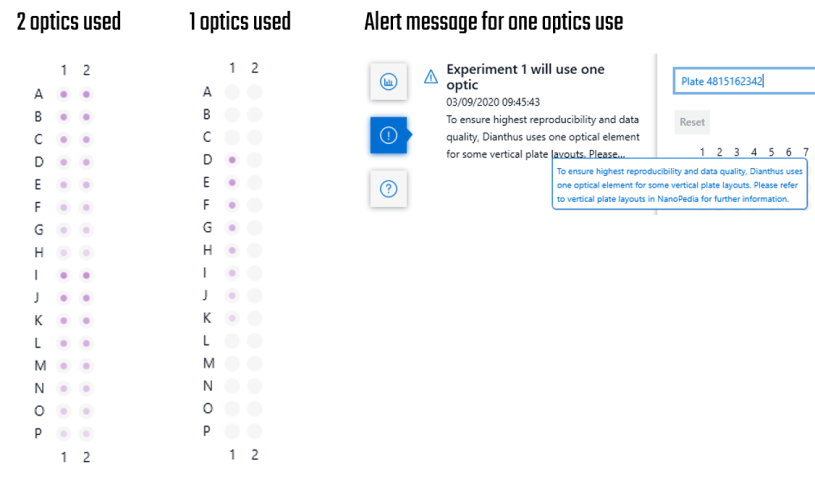Plate Layouts
DI.Control offers full flexibility in terms of plate layouts. Dilution series of ligands can be placed either in horizontal orientation (e.g. Well A1-A12) or vertical orientation (e.g. Well A1-H1, also see Vertical Plate Layouts). The number of dilution points can be freely selected (e.g. 8-, 12-, 16-point etc.), as well as the directionality (i.e. first well can either have lowest or highest ligand concentration). In single dose assays the position of references and positive controls can be freely selected by the user. There are some important considerations when deciding for a specific plate layout.
One of the major determinants of a plate layout is the Dilutionseries ID, relevant for Affinity Screening or the Normalization ID, relevant for Single-Dose Screening. Dilution Series ID and Normalization ID determine if one or both optical systems are used to measure particular Plates PicoDuo instrument. The requirement for a Dianthus PicoDuo instrument to use both optical systems in parallel, thereby enhancing the throughput of a measurement are as follows:
For Affinity Screening: A dilution series cannot stretch over both, the upper and lower part of the plate.For example, a 16-point dilution series stretches over the wells A1, B1, C1 … P1, the Dianthus will only use one optical system. This is due to the fact that even though the two optics in a PicoDuo instrument are very precisely aligned, small differences can cause inconsistencies in the data quality, especially for small Response Amplitudes.

For Single-Dose Screening: A group of wells with the same Normalization ID cannot stretch over both, the upper and lower part of the plate. Ligand samples should always be referenced to a Reference Sample that was measured with the same optical system. This is due to the fact that even though the two optics in a PicoDuo instrument are very precisely aligned, small differences can cause inconsistencies in the data quality, especially for small Response Amplitudes.